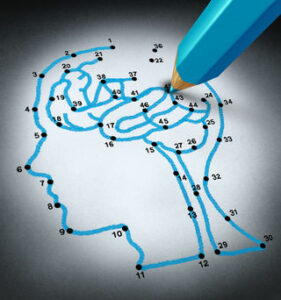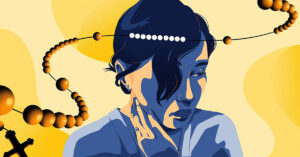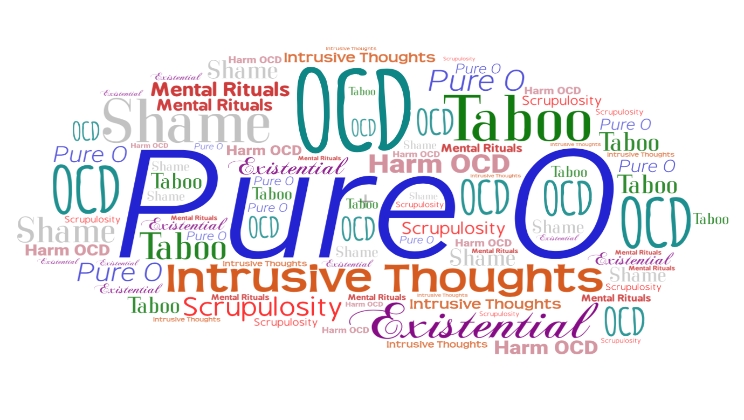Did you know that there are different types of Obsessive Compulsive Disorder (OCD)? In fact, OCD is a complex disorder that can manifest in many ways. This makes it difficult to diagnose and can often lead to misunderstandings about the condition. In this blog post, we will discuss the different subtypes of OCD and provide information about each one. We hope that this will help to increase understanding and awareness about this debilitating disorder.
Contents
- 1 18 Most Common Subtypes Of OCD
- 1.1 Contamination OCD
- 1.2 Checking OCD
- 1.3 Counting OCD
- 1.4 Hoarding OCD
- 1.5 Magical Thinking OCD
- 1.6 Religious OCD
- 1.7 Harm OCD
- 1.8 Health OCD
- 1.9 Relationship OCD
- 1.10 Existential OCD
- 1.11 False Memory OCD
- 1.12 Sexual Orientation OCD
- 1.13 Transgender OCD
- 1.14 Pedophilia OCD
- 1.15 Just Right OCD
- 1.16 Suicidal OCD
- 1.17 Postpartum OCD
- 1.18 Purely Obsessional OCD
- 2 Diagnosis
- 3 Treatment Options
- 4 Conclusion
18 Most Common Subtypes Of OCD

OCD, a popular acronym for Obsessive Compulsive Disorder, is a mental disorder in which people have intrusive and unwanted thoughts (obsessions) that lead them to perform repetitive behaviors (compulsions).
While the majority of people with OCD will experience both obsessions and compulsions, it is possible to have only one or the other. In fact, there are many different subtypes of OCD, each with its own unique set of symptoms. Here are 18 of the most common subtypes:
Contamination OCD
When we think of OCD, the first picture in most people’s minds is of someone with contamination OCD. This is because this is one of the most commonly depicted subtypes of OCD in popular culture. People with contamination OCD are obsessed with the idea of being contaminated by germs or other substances. They may compulsively wash their hands, avoid touching surfaces or clean their homes obsessively. This pattern of repetitive and obsessive cleaning is what sets contamination OCD apart from simply having good hygiene habits.
Typically, most people with contamination OCD are in a constant state of worry about becoming sick or contaminating others. They may also have strong fears about contracting a specific disease or being exposed to hazardous materials. This can lead to a great deal of anxiety and stress, as well as interfere with daily activities.
This subtype is the most common form of OCD, affecting approximately 40% of people with the disorder. It also has the highest rate of co-occurrence with other anxiety disorders.
Checking OCD
Checking OCD is another common subtype, affecting approximately 30% of people with the disorder. People with checking OCD are obsessed with the fear that something bad will happen if they don’t check things repeatedly. For example, they may check the stove to make sure it’s turned off multiple times before leaving the house, or they may constantly check their phone to make sure they didn’t miss a call.
These behaviors are often very distressing to the person with OCD and can cause a great deal of anxiety. Checking OCD is often accompanied by other subtypes of OCD, such as hoarding, washing, and order. This is done so to keep the person with OCD from having to make decisions about what is safe or not. Checking rituals are often time-consuming and can take away from important activities such as work, school, or spending time with family and friends.
Counting OCD

Counting OCD is set apart from other subtypes of OCD by the very prominent role that numbers and counting play in the sufferer’s thoughts and behaviors. In many cases, people with this subtype of OCD will develop very specific and often complex rituals around numbers and counting in an attempt to ward off some imagined catastrophe. For example, a person with Counting OCD might feel compelled to count every single crack in the sidewalk on their way to work, or they might have to count out loud whenever they see a number on a sign or in a book.
Although it may appear harmless, it can cause significant distress and disruption in a person’s life. The interference and obsession with numbers and counting can come in the way of work, school, and social activities.
Hoarding OCD
Hoarding OCD is another subtype that is often depicted in popular culture. People with hoarding OCD are obsessed with the idea of needing to save or hoard items. They may compulsively collect items, even if they are of no use or value, and they may have difficulty getting rid of anything, even items that are rotting or infested with pests.
Hoarding OCD can cause significant distress and disruption in a person’s life, as well as pose a serious health and safety risk. It can even lead to serious consequences with others, such as eviction from home, legal trouble, and strained relationships.
Magical Thinking OCD
As the name suggests, magical thinking is a subtype of OCD that is characterized by the belief that one’s thoughts, words, or actions can influence events in the physical world in ways that are supernatural or outside the laws of physics. For example, a person with magical thinking OCD may believe that they can cause a loved one to get sick by thinking about them too much.
Magical thinking OCD is distinct from other subtypes of OCD as the individual might be aware that their thoughts are irrational, but they are still unable to control them. This contradiction can lead to a lot of cognitive dissonances and can be very confusing for the individual. It can also result in emotional distress and anxiety.
Religious OCD

Also known by the name of scrupulosity, religious OCD is a subtype of OCD that is characterized by intrusive and distressing thoughts about blasphemous or heretical ideas. People with religious OCD may worry that they have committed a sin or that they will be damned to hell. They may also have obsessions about the devil or other demonic entities.
Religious OCD can have a significant impact on a person’s life, as it can cause them to avoid religious activities or places of worship. It can also lead to social isolation and strained relationships. Furthermore, it may cause a person to have a fearful, anxious, or depressed outlook on religion. This can cause a lot of paranoia, and in some cases, may even lead to suicide.
Harm OCD
As one might be able to figure from the name, harm OCD is a subtype of OCD that is characterized by intrusive and distressing thoughts about harming oneself or others. People with harm OCD may have obsessions about knives, guns, or other potentially harmful objects. They may also have compulsions to avoid these objects or to seek reassurance from others that they will not use them.
Harm OCD can cause a stressful, scary and anxiety-provoking experience. It can also lead to social isolation, as well as strained relationships. People with this subtype of OCD may also avoid activities or places where they might be able to harm themselves or others.
Health OCD
Health OCD is a subtype of OCD where a person is fixated on their health and well-being. They may have fears of contracting a disease or being injured, and often engage in compulsions such as excessive hand-washing, checking for injuries, or avoiding potential hazards.
Health OCD can be particularly debilitating, as it can lead to a preoccupation with thinking something might be wrong, even when it’s not. A person may indulge in frequent medical check-ups or research their symptoms online obsessively. This can lead to a lot of anxiety and stress, as well as financial strain if the person is avoiding work or school due to their fears.
Relationship OCD
 Relationship OCD, also known as ROCD, is a subtype of OCD that is characterized by intrusive thoughts and compulsions related to relationships. People with ROCD may obsessively question their feelings for their partner or whether they are truly compatible. They may have constant and obsessive doubts about their relationship, and may engage in compulsions such as checking their partner’s phone or social media accounts, or asking for reassurance.
Relationship OCD, also known as ROCD, is a subtype of OCD that is characterized by intrusive thoughts and compulsions related to relationships. People with ROCD may obsessively question their feelings for their partner or whether they are truly compatible. They may have constant and obsessive doubts about their relationship, and may engage in compulsions such as checking their partner’s phone or social media accounts, or asking for reassurance.
ROCD can be extremely distressing and can have a negative impact on all aspects of a person’s life. It can lead to social isolation, as well as strained or even broken relationships. This disorder can become burdening for both the people in the relationship due to the nature of the obsessions and compulsions.
Existential OCD
Existential OCD is a rare yet debilitating subtype of OCD in which a person is fixated on existential concerns such as death, the meaning of life, and their own mortality. People with existential OCD may have obsessions about topics such as terrorism, natural disasters, or global warming. They may also have compulsions to avoid these topics or to seek reassurance from others about them. They have repetitive and constant urges to question their life choices and wonder if they are living a meaningful life.
Existential OCD can be extremely distressing, as it can cause a person to feel isolated and alone in their thoughts. It can lead to social isolation, as well as strained relationships. This subtype of OCD can also cause a person to have a negative outlook on life and lead to a depletion in their quality of life.
False Memory OCD
This is one of the most difficult things about having OCD – it can be so hard to explain what goes on in our heads because it doesn’t always make sense, even to us. False memory OCD is a type of OCD where the sufferer is plagued by intrusive thoughts and images that are not based in reality. For example, you may have a memory of doing something embarrassing or harmful, even though you know you would never actually do those things. This can be extremely distressing and can lead to a great deal of anxiety and avoidance behavior.
This type of OCD can cause a person to have low self-esteem, trust issues, paranoia, and social anxiety. It’s often comorbid with other types of OCD, such as contamination OCD or checking OCD.
Sexual Orientation OCD

Sexual orientation OCD is something that has gained a lot of attention in recent years. This is because it can be a very confusing and difficult subtype of OCD to deal with. People with sexual orientation OCD often obsess about their own sexual orientation, or the sexual orientation of others. They may have intrusive thoughts or images about being gay, lesbian, bisexual, or straight. These thoughts can be so distressing that they may avoid situations or people that they think might trigger them.
People with sexual orientation OCD often feel like they are “on the fence” about their sexual orientation. They may go back and forth between thinking they are gay and thinking they are straight. This can be a very confusing and frustrating experience. People with sexual orientation OCD may also have a lot of anxiety about coming out to others. They may worry that they will be rejected or ridiculed if they reveal their true feelings.
Transgender OCD
Similar to sexual orientation OCD, transgender OCD is marked by significant anxiety about one’s assigned gender. This subtype is also known as gender identity OCD. People with transgender OCD obsessively worry that they are “trapped” in the wrong body and must transition to their “true” gender in order to live a happy, fulfilled life. Some people with this subtype may also have body dysmorphic disorder (BDD), which is characterized by a preoccupation with one or more perceived physical flaws.
Transgender OCD by itself can have severe consequences, but when it’s accompanied by BDD, the potential for harm is even greater. People with BDD are at an increased risk for depression, social isolation, and even suicide.
Pedophilia OCD
This is perhaps the most disturbing, and one of the most taboo, subtypes of OCD. People with pedophilia OCD obsessively worry that they are attracted to children or will act on those attractions. They may have intrusive thoughts or images about harming or molesting a child. In some cases, people with this subtype may also engage in compulsive behaviors such as avoidance (e.g., avoiding being around children) or checking (e.g., obsessively checking for signs that they’re attracted to children).
While this subtype of OCD is certainly very distressing, it’s important to remember that having these thoughts does not make a person a pedophile. It’s also important to note that people with pedophilia OCD are not attracted to children and would never act on their thoughts.
Just Right OCD
This subtype of OCD has to do with the need for things to be “just right.” People with Just Right OCD obsessively worry that something is not in its proper place or that they haven’t done something correctly. They may have intrusive thoughts about making a mistake or doing something wrong. This can lead to compulsive behaviors such as checking (e.g., checking to make sure the oven is turned off) or ordering/arranging (e.g., compulsively organizing objects).
Just Right OCD can be a very frustrating and debilitating condition. It can cause a person to feel like they are never good enough and that they can never do anything right. This subtype of OCD is often comorbid with other disorders such as depression, anxiety, and eating disorders.
It can also be mistaken for other subtypes such as Checking OCD or contamination OCD.
Suicidal OCD
Suicidal OCD, by the name of it, seems like it would be one of the more dangerous subtypes. However, people with suicidal OCD are not actually at risk for harming themselves. Rather, they obsessively worry about harming themselves or being harmed by others. They may have intrusive thoughts about self-harm or homicide. This can lead to compulsive behaviors such as avoidance (e.g., avoiding knives or other sharp objects) or checking (e.g., checking to make sure the doors are locked).
While suicidal OCD may not be as immediately harmful as some of the other subtypes, it can still be very distressing and debilitating. People with this subtype often suffer from depression, anxiety, and social isolation. They may also be at an increased risk for substance abuse. They may also have a tendency to indulge in self-harm as a coping mechanism.
Postpartum OCD
Postpartum OCD, similar to postpartum depression or anxiety, is a subtype of OCD that can occur after the birth of a child. It is estimated that up to 20% of women experience some form of postpartum mental illness. Postpartum OCD is characterized by obsessions and compulsions related to the care of the baby. Women with this condition may worry that they will harm their baby or that something will happen to their baby. This can lead to compulsive behaviors. For example, checking (e.g., checking on the baby every five minutes) or avoidance (e.g., avoiding being around sharp objects).
Postpartum OCD can be a very difficult condition to deal with. Not only is it hard to care for a newborn, but you also have to deal with the added stress of OCD. This can cause a significant reduction in quality of life and impact all domains of life, including work, relationships, and self-care.
Purely Obsessional OCD

Lastly, we have Purely Obsessional OCD, also known as Pure-O. This subtype of OCD is characterized by obsessions without any visible compulsions. However, that doesn’t mean that people with Pure-O don’t engage in compulsions. They just tend to be mental or covert in nature. Some examples of mental compulsions include:
- Reassurance seeking (i.e. constantly asking others if they think you’re a good person, or if they still love you)
- Mental review (i.e. going over past events in your head over and over again)
- Neutralizing (i.e. trying to cancel out intrusive thoughts with positive thoughts)
As you can see, OCD comes in many different forms, and each subtype can present in a variety of ways. If you think you might be struggling with OCD, it’s important to reach out for help. With proper diagnosis and treatment, people with OCD can lead happy and fulfilling lives.
Diagnosis

It is important to note that different subtypes of OCD do not have separate diagnosis. Rather, they are considered specifiers for the main diagnosis of OCD. That being said, it can be helpful to identify which subtypes of OCD you may be experiencing in order to get a better understanding of your symptoms and how to best treat them.
If you think you might have OCD, the first step is to reach out to a mental health professional for a proper evaluation. They will likely ask you about your symptoms and how they impact your life. They may also give you a questionnaire or conduct a structured interview. This can help to assess whether or not you meet the criteria for OCD. The most common tool for OCD diagnosis is DSM-5, popular for its reliability and validity.
Treatment Options
Once OCD has been diagnosed, the next step is to begin treatment. The most common and effective treatment options for OCD include:
- Cognitive-behavioral therapy (CBT): Cognitive-behavioral therapy is a type of talk therapy that focuses on changing negative thought patterns and behaviors.
- Exposure and response prevention (ERP): Exposure and response prevention is a type of CBT that involves gradually exposing yourself to your triggers while learning to resist the urge to engage in compulsions.
- Medication: Medication can also be used to help manage OCD symptoms, though it is typically used in conjunction with CBT or ERP. It is prescribed when the symptoms are too severe and happen because of genetic factors.
- Natural treatments: Some people with OCD may also find relief with natural treatments such as:
-Acupuncture
-Yoga
-Massage
-Herbal supplements
-Probiotics
As you can see, there are many different treatment options available for OCD. The most important thing is to find what works best for you. If one treatment doesn’t work, don’t give up – there are many other options out there.
Conclusion
In conclusion, there are many different subtypes of OCD, each with its own unique set of symptoms and behaviors. If you think you might have OCD, it’s important to seek professional help. Treatment for OCD can be very effective, and there is no need to suffer in silence.
If you are struggling with OCD, know that you are not alone. There are many resources available to help you cope with this condition. Reach out to Therapy Mantra for help getting started on the road to recovery. We have a team of mental health professionals who specialize in treating OCD. Our specialists can help you develop a treatment plan that meets your specific needs. Contact us today to book an online therapy or download our free OCD treatment app on Android or iOS for more information.


